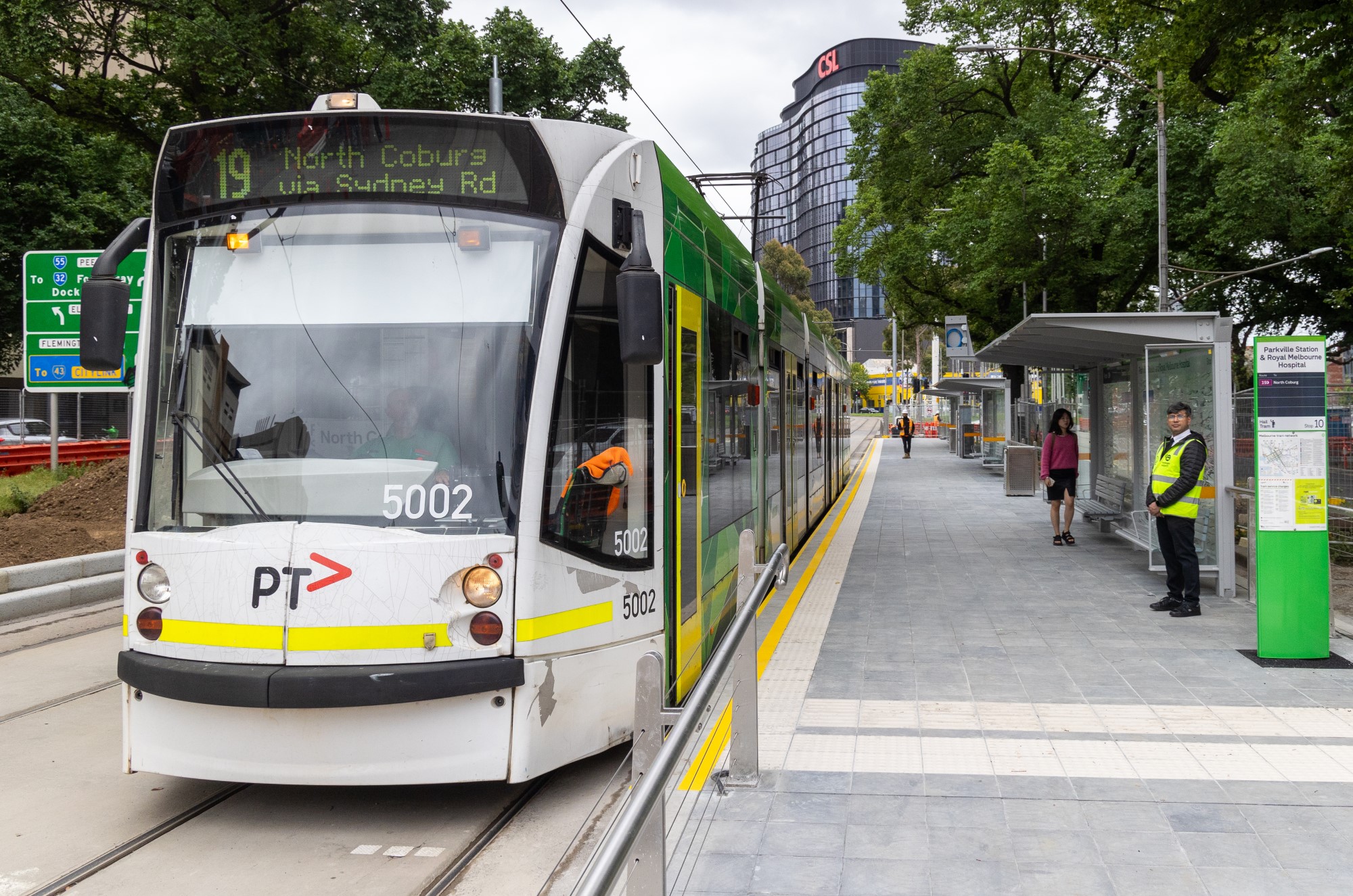 A new tram stop in Melbourne has been put into operation which will provide connection to the future Parkville metro station, improving access to Parkville’s world-class health, research and education precinct.
A new tram stop in Melbourne has been put into operation which will provide connection to the future Parkville metro station, improving access to Parkville’s world-class health, research and education precinct.
The new level access tram stop will allow people to switch easily from tram services to the train network at Parkville when the Metro Tunnel opens to passengers a year ahead of schedule.
Crews worked around-the-clock for nine days to build new raised tram platforms on both sides of the tram tracks, install underground services and new traffic signals and reinstate the tram line on Royal Parade and Elizabeth Street, near the corner of Grattan Street.
The tram stop includes shelters and raised platforms to provide level-access boarding for low-floor trams and will include passenger information displays, footpaths and crossing in early 2024 and footpaths and crossings.
The new tram stop in Melbourne opened on 30 November when tram services resumed. “This new tram stop will seamlessly link tram services with the Metro Tunnel, providing new and improved connections to Parkville’s university and hospitals by public transport,” the Minister for Public and Active Transport Gabrielle Williams said.
Parkville station will open with the Metro Tunnel in 2025, providing a direct train connection to the precinct for the first time and making travel easier for the thousands of healthcare workers, students, patients and families who visit every day.
The tram stop in Melbourne will include a pedestrian underpass beneath Royal Parade linking Parkville Station and the University of Melbourne to the hospitals, allowing people to cross the road without waiting for traffic.
Deep below Grattan Street the new station is taking shape, with lifts, escalators, security systems and CCTV installed, along with platform screen doors, seating and passenger information displays.
The Metro Tunnel Project will connect the busy Sunbury and Cranbourne/Pakenham lines via the new tunnel, creating an end-to-end rail line from the north-west to the south-east, freeing up space in the City Loop to run more trains across the city and suburbs and connecting Victorians to jobs, health, education and each other.
Share on:



